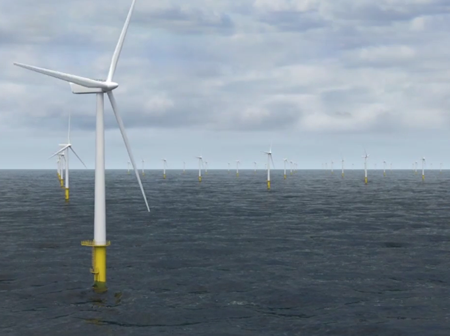

Geosynthetics have played a substantial role in making constructions more economical and more sustainable. In honor of Earth Day 2015, we’ve selected five of Geosynthetica’s most popular sustainability-related stories.
IGS Video on Sustainability
The International Geosynthetics Society (IGS) sponsored the creation and promotion of its first major video project, “Geosynthetics for Sustainable Development.” The five-minute video includes commentary from Dr. JP Giroud, one of the most honored and influential designers in the field. Dr. Giroud was one of the early adopters of geosynthetics and even coined the terms “geotextile” and “geosynthetic.”
Scour Protection for Off-Shore Wind
The Amrumbank West offshore wind farm is located 35 km north of Helgoland and 37 km west of the North Frisian island of Amrum. It extends over 34 km². The energy company E.ON is installing 80 Siemens 3.6 MW class wind turbines to give the wind farm a future capacity of 288 megawatts. This is enough power to supply up to 300,000 homes and save more than 740,000 tonnes of CO2 per year. In the video story “Secure offshore wind energy”, the Amrumbank West wind farm is described. The case study exemplifies how geotextile sand containers (Secutex® Soft Rock) enable economical, technically sound and safe construction.
Solar Landfills Returning with Geosynthetic Barriers
The geosynthetics field had a brief foray into system-based, solar energy-generating landfill covers (2009 – 2012), but the waste management market was not fully ready for such a change. Still, the economic advantages of exposed and alternative capping systems (vs. traditional, thick, soil-covered caps) and the long-term performance indicators meant that it would probably not be too long before solar landfills returned. They have.
VIDEO: IGS UK Sponsoring Sustainability Study with Loughborough University
During the International Geosynthetics Society’s (IGS) quadrennial GeoAfrica event (November 2013, Ghana), Geosynthetica’s Elizabeth Peggs sat down with Peter Assinder and Prof. Neil Dixon to discuss an important, multi-year sustainability study that was conducted in the United Kingdom. They discuss the growing case study library, impending journal articles, CO2 calculations, and more.
A Growing Market: Algae, Biofuels and Geosynthetics
Geosynthetics can provide dependable, well-tested containment and separation solutions, and these materials can be used well-beyond algae farm production optimization. Separation of solids, for example, can be a boon to bioenergy production at many wastewater treatment plant (WWTP) facilities. Dried sludge from biosolids can generate 6,000 Btus. If separated out, WWTP biosolids involve many other energy-producing elements: grit, 4,000 Btus; screenings, 9,000 Btus; grease, 16,000 Btus (which is more than gasoline).











